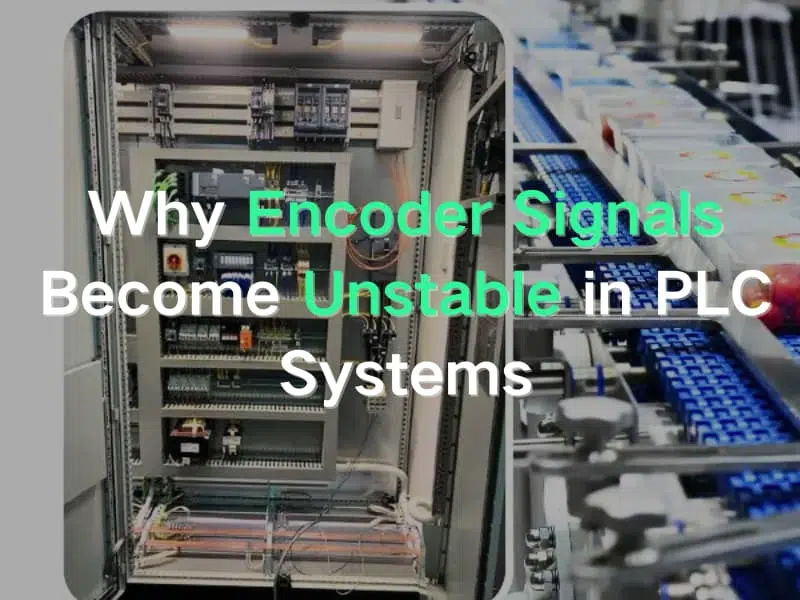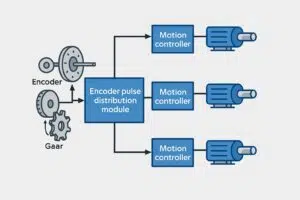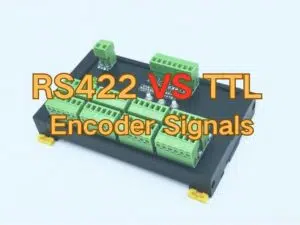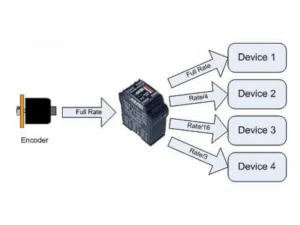In modern industrial automation, encoder feedback is the heartbeat of precision control — it determines motor speed, position, and synchronization. Yet, engineers often face a frustrating problem: the encoder signal becomes unstable when connected to a PLC. Pulses fluctuate, values drift, and machines lose accuracy.
This article explains the main causes of unstable encoder signals, how interference occurs, and the most effective ways to stabilize pulse feedback using isolation and distribution modules.
Common Reasons for Unstable Encoder Signals
Encoder instability is usually caused by electrical noise, grounding loopsou signal degradation.
When encoder cables run near power lines or variable frequency drives (VFDs), electromagnetic interference (EMI) distorts the A/B/Z pulses. Ground potential differences between the encoder and PLC can also cause count loss or duplicate pulses.
In most systems, unstable signals can be mitigated by using differential RS422 outputs or adding isolation modules. See our article RS422 vs TTL Encoder Signals: Which Is Better for Your Automation System for a deeper comparison.
| Cause | Effect | Diagnostic Tip |
| EMI | Random signal spikes, missing or extra pulses | Compare encoder noise with machinery on/off |
| Ground Loops | Intermittent spikes, floating signal reference | Check ground potential differences |
| Poor Shielding | Noise/hum on signal, increasing with cable length | Inspect shield continuity, cable routing |
| Mechanical Vibration | Gaps, false triggers, signal drift | Observe response during machine motion |
| Cable Quality Issues | Irregular pulses, total loss | Try short patch cable for test |
How Electrical Noise Affects PLC Accuracy
Electrical noise is the silent killer of PLC precision. Pulse distortion, caused by power line coupling, inductive loads, or stray capacitance, leads to the PLC seeing “phantom” pulses or missing actual transitions altogether. In position and speed control, this equates to skipped steps, oscillating feedback, or axis lag.
The “encoder noise filter” is an essential defense. Two types exist:
- Hardware Noise Filters: Physical circuits that block unwanted frequencies at the signal input. They deal directly with high-frequency interference and provide robust protection, especially if placed close to the source.
- Software Filtering: PLC-side algorithms attempt to ignore signal changes that are too fast or inconsistent to be genuine pulses. This works well for minor glitches but can’t stop heavy interference at the hardware level.
Hardware vs. Software Encoder Noise Filtering
| Filtrage | How it Works | Pour | Cons |
| Hardware Filter | Blocks EMI at input circuit | Fast, effective | Must be installed |
| Software Filter | PLC logic debounces pulses | Simple to adjust | May add latency, limited against strong EMI |
For more advice on safely distributing encoder signals, see: How to Split One Encoder Signal to Multiple Devices Safely?
Noise also comes from nearby servo drives or relay switching, which induce transient voltages.
In packaging or conveyor systems, these errors often result in offset printing, misaligned labels, or robotic pick failures.
The Role of Pulse Isolation and Distribution Modules
Un encoder pulse distribution module acts as a protective interface between encoder and PLC. It filters noise and regenerates the signal through optical isolation and RS422 drivers.
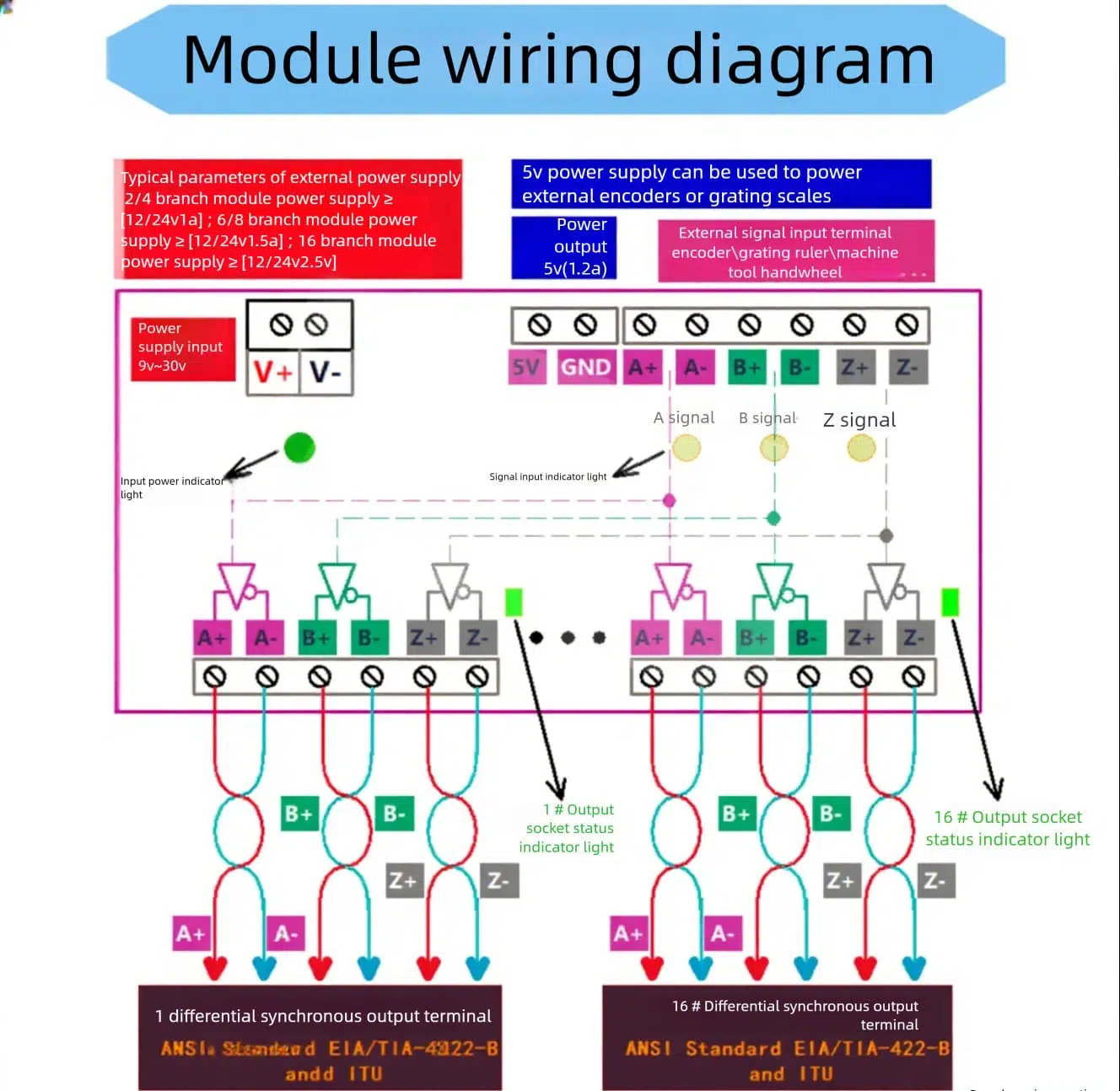
How do they help?
- Isolation: By using opto-isolators, they sever any direct ground path, eliminating potential ground loops.
- Differential Output: RS422 and similar standards send pulses on two wires; only the voltage difference matters, making them highly immune to common-mode noise and cable interference.
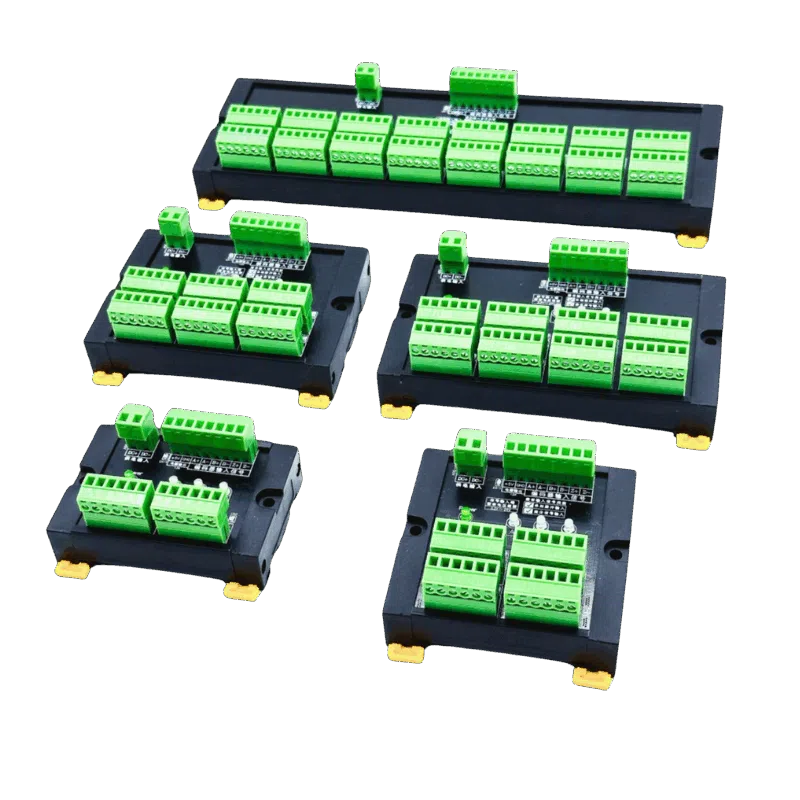
Model Number: AOSI EJ-XABZ Pulse Distribution Module
- AOSI RS422 differential encoder pulse distribution module provides multiple isolated outputs for clean and stable ABZ signal transmission. It’s designed for high-speed PLC feedback, servo synchronization, and automation systems requiring noise-free signal distribution.
This module eliminates ground-loop interference and enables one encoder to feed several PLCs or servo drives without degrading the signal.
Proper Grounding and Cable Layout
Even with advanced hardware, poor grounding ruins reliability. Always connect cable shields at only one end (PLC side) to prevent ground loops.
Conseils :
- Use twisted-pair cables for A/A–, B/B–, Z/Z– channels.
- Keep encoder cables 10 cm away from motor power lines.
- Use metal conduits when routing cables inside panels.
Real Application – Packaging Line Signal Drift Fix
A food packaging line reported random position jumps. The encoder connected directly to the PLC experienced heavy EMI from nearby drives.
After installing an AOSI ABZ Pulse Isolation Module and replacing the cable with shielded twisted pairs, the drift disappeared.
📊 Results After Fix
| Paramètres | Before | Après |
| Count Error | ±8 pulses | 0 pulses |
| Position Accuracy | ±2 mm | ±0.3 mm |
| Downtime/Week | 4 hours | 0 hours |
After installing the RS422 differential isolation module, the encoder feedback became fully stable — zero pulse loss even at high motor speed.
Position accuracy improved by nearly 90%, and the system ran continuously without unplanned stops.
This demonstrates how an optically isolated encoder pulse distribution module not only eliminates EMI noise but also enhances overall machine reliability and production efficiency.
How Isolation Improves Long-Term Reliability
Isolation modules not only eliminate interference but also extend system life:
- Reduced Maintenance: Stable input means no false triggers.
- Extended Range: Reliable up to 30 meters.
- Surge Protection: Optical barrier prevents PLC damage.
- Scalability: Connect multiple PLCs or servo drives easily.
These modules are now standard in factory automation, robotics, and servo synchronization systems, where every pulse counts.
FAQs of Unstable Encoder Signal in PLC Systems
A1: Interference, ground loops, and long cable distances are main causes. Differential wiring and isolation modules fix these issues effectively.
A2: Use an oscilloscope. Irregular square wave edges or pulse skipping confirms interference.
A3: Yes. RS422 differential signals cancel EMI and support longer cable distances with higher reliability.
A4: It isolates and amplifies encoder signals to safely feed multiple PLCs or drives.
A5: Ground the shield at one end only (PLC side). Avoid double-ended grounding.
A6: Not safely. Use an isolation or distribution module to prevent signal reflections and voltage mismatch.
Conclusion
Unstable encoder signals can cripple automation accuracy — but with isolation and proper wiring, stability is easy to achieve.
Adding an encoder pulse distribution module ensures clean, interference-free ABZ feedback, protects PLC inputs, and improves control precision.
For high-reliability motion feedback, explore the full range of AOSI Encoder Pulse Distribution Modules — designed for automation, packaging, and robotics applications.

